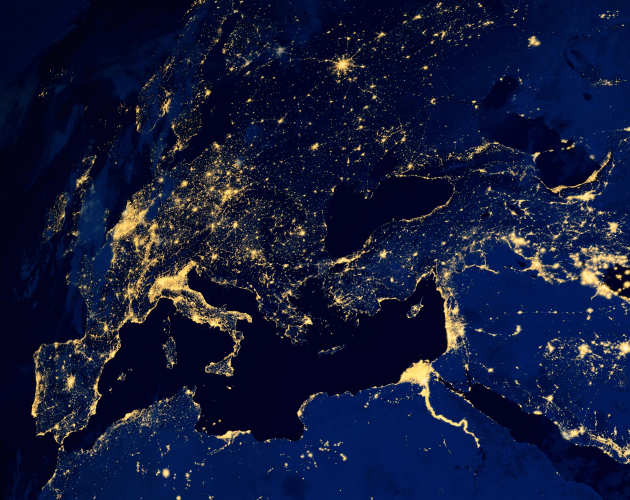Topics: Earth systems science, Mitigation
Type: Briefing paper
Publication date: March 2016
Download
Summary
Authors: Dr Stephen Hardwick and Dr Heather Graven
Headlines
- Satellites produce high-resolution global observations of Earth’s surface and atmosphere that provide information about greenhouse gas emissions.
- Satellites are used to measure atmospheric concentrations of carbon dioxide and methane. This information is incorporated into atmospheric and statistical models to estimate global and regional sources and sinks of these gases.
- Satellite observations of Earth’s surface provide data on land cover, fires, human population and infrastructure, and the biomass and biological activity of vegetation. These data are used to quantify greenhouse gas emissions from land use change and biomass burning, to estimate the spatial distribution of fossil fuel combustion, and to determine flows of greenhouse gases from terrestrial and marine ecosystems.
- National and international initiatives are being coordinated
Aim
The aim of this paper is to provide an overview of the ways in which satellite-based Earth observations can provide information to better understand, estimate and mitigate the emissions of the greenhouse gases carbon dioxide and methane (CO2 and CH4). Some key satellite datasets and their applications for studying greenhouse gas emissions are described, separating the observations into two types: measurements of atmospheric concentrations and measurements of Earth’s surface. More detailed information on current activities, as well as the potential and planning for future applications, is available from several resources.
Introduction
Satellite technology has transformed our ability to observe the state of our planet. Our understanding of the Earth and its key systems has improved significantly since the launch of the first observation satellites in the 1960s. Satellites have the unique ability to provide global coverage of the Earth’s surface and atmospheric composition that is not possible using groundbased monitoring techniques. The improvements in weather forecasting and natural resource management that have been made possible by Earth observation satellites have had large socio-economic benefits.
Atmospheric concentrations of greenhouse gases have risen sharply in recent decades as a result of human activity. The changes in climate that can be expected as a result of the ongoing emissions of greenhouse gases could have large, harmful impacts on human wellbeing. Consequently, there have been international efforts to reduce greenhouse gas emissions, with many countries setting legally binding targets for reductions over the coming decades.
Greenhouse gas emissions are calculated using standardised bookkeeping approaches based on economic and land management data. Emission factors relate the economic and land management data, also known as activity data, to the emissions of greenhouse gases, for example the amount of CO2 released per unit of fuel combusted. Uncertainties in emissions can arise either from the activity data or from the emission factors used, which can often be hard to measure or highly variable in different circumstances. Uncertainties on these “bottom-up” calculations of CO2 emissions from developed countries are less than 10%. Emissions of CO2 from developing countries and emissions of other greenhouse gases generally have larger uncertainties. Satellites have the ability to provide activity data for “bottom-up” calculations of greenhouse gas emissions, as well as data to validate emissions estimates.
Download: Satellite observations to support monitoring of greenhouse gas emissions
View publications by:
Topic
Climate Science
Earth and Life Sciences
Energy and Low-Carbon Futures
Resources and Pollution
Economics and Finance
Health
View all publications and browse by year
Publication type
Briefing papers and Briefing notes
Grantham Institute Outlooks
Evidence & submission papers
Infographics